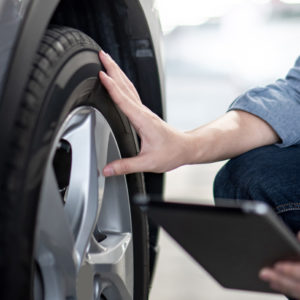Q: Where Is the Tire Pressure Sensor Typically Located?
A: In many vehicles, the tire pressure sensor is built into a specialized tire valve. These vehicles put the sensor at the valve stem’s base, which can be found just inside the wheel assembly. Other vehicles mount the tire pressure sensor on the wheel’s inside. In these vehicles, the sensor usually attaches to the barrel of the wheel.
In vehicles with a TPMS, each tire has a tire pressure sensor mounted on its inside. The sensor measures the air pressure inside the tire and transmits its readings to the TPMS. In turn, the TPMS will inform you about the tire pressure, illuminating the appropriate warning light if the pressure is too high or too low in a tire.

Tips On How to Access the Tire Pressure Sensor
Usually, the tire hides its tire pressure sensor. To access the sensor, you must first remove the tire from the wheel. Take care while removing the tire. Otherwise, you might accidentally hit the tire valve and damage the sensor. If the sensor develops a problem, you must replace the entire tire. Otherwise, it might continuously set off the TPMS and keep the warning light on.
Not all spare tires come with a tire pressure sensor. Check the spare in your vehicle’s trunk. If the tire lacks a tire pressure sensor, you must replace it with one that has a sensor. Starting in 2007, all new vehicles must have a tire pressure monitoring system. Tires intended for use with these vehicles must have a tire pressure sensor.
Any information provided on this Website is for informational purposes only and is not intended to replace consultation with a professional mechanic. The accuracy and timeliness of the information may change from the time of publication.




























